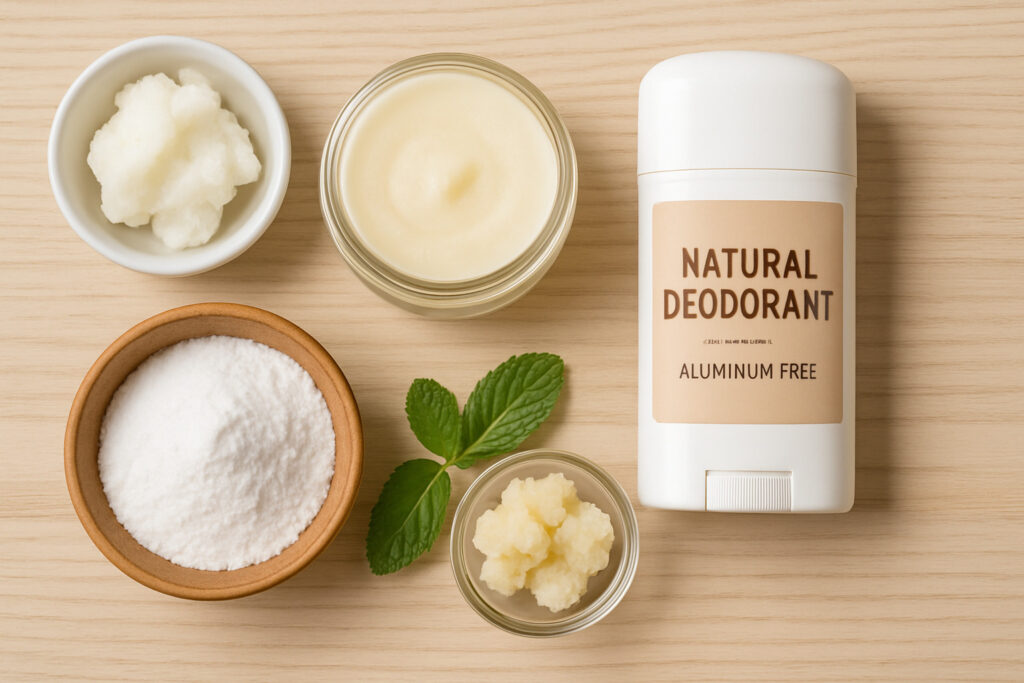Why Natural Deodorant Alternatives Are Taking Over Your Medicine Cabinet
Natural deodorant alternatives are becoming the go-to choice for health-conscious consumers who want effective odor protection without aluminum, parabens, or synthetic chemicals. Here are the most popular options that actually work:
Top Natural Deodorant Alternatives:
- Mineral salt crystals – Work up to 24 hours by creating a protective barrier
- Baking soda + coconut oil blends – Neutralize odor-causing bacteria naturally
- Magnesium hydroxide formulas – Gentle on sensitive skin, no irritation
- Probiotic deodorants – Balance your underarm microbiome
- AHA-based options – Exfoliate and prevent bacterial buildup
- DIY powder recipes – Mix cornstarch and essential oils at home
The shift away from traditional antiperspirants isn’t just a trend. Research shows aluminum compounds may disrupt estrogen signaling, while parabens raise concerns about hormone interference. Plus, conventional deodorants create those stubborn yellow stains and block your body’s natural detox process.
Your body needs 2-4 weeks to adjust when switching to natural options, so don’t give up if the first week feels different. Many people find they actually sweat less once their pores reopen and their skin microbiome rebalances.
Whether you’re dealing with sensitive skin, want to reduce your chemical load, or simply prefer eco-friendly packaging, there’s a natural deodorant alternative that fits your lifestyle.
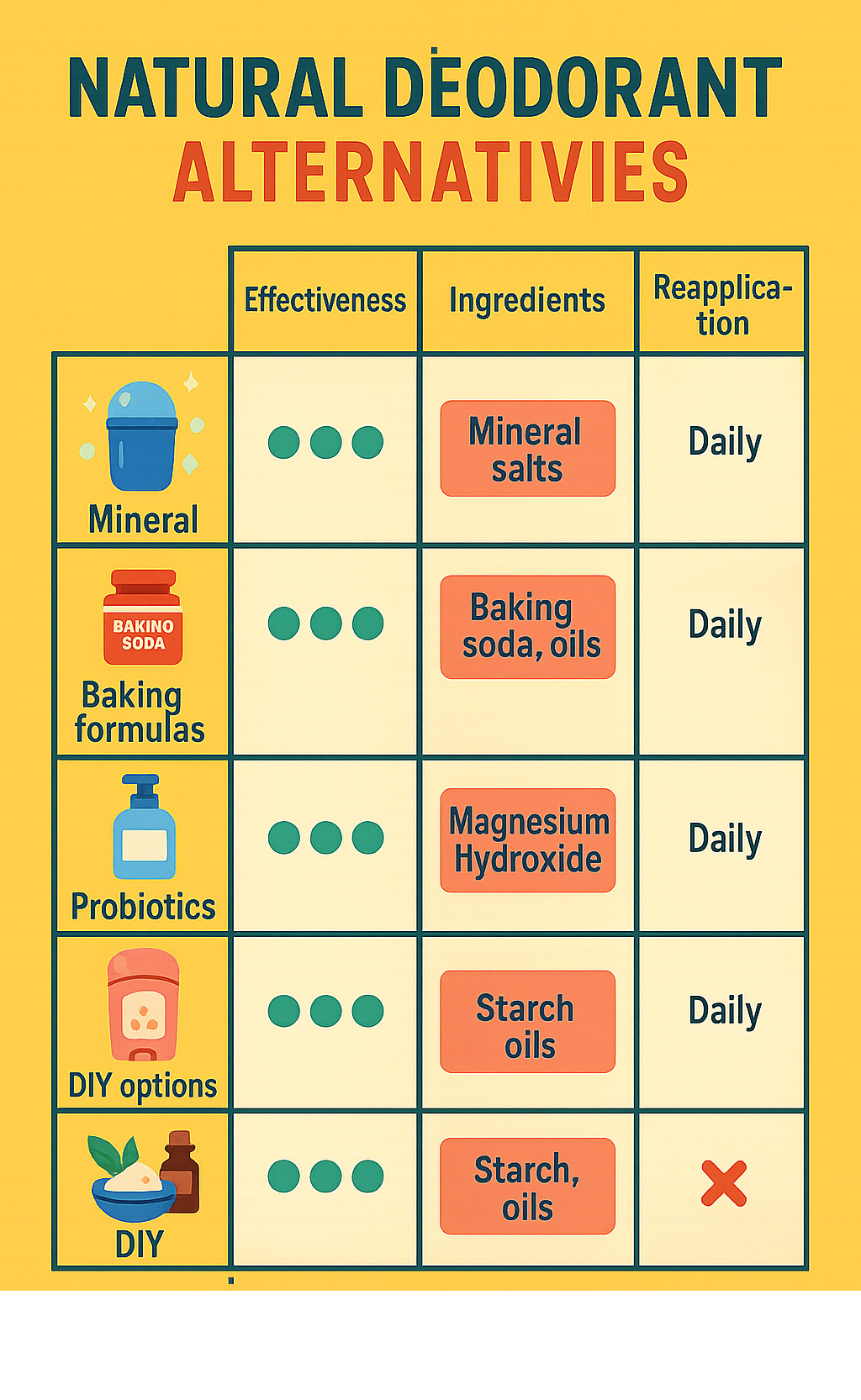
Easy natural deodorant alternatives glossary:
What This Guide Covers
We’ve tested and researched dozens of natural deodorant alternatives to bring you this comprehensive roundup. You’ll find effective store-bought options that keep you fresh for hours, plus simple DIY recipes you can whip up tonight with kitchen staples. We’ll also walk you through the transition process, troubleshoot common issues, and share expert tips for maximizing performance.
Our scope includes mineral crystals, baking soda-free formulas for sensitive skin, innovative probiotic options, and foolproof homemade recipes. Whether you’re a natural beauty newbie or looking to upgrade your current routine, this guide covers everything you need to make the switch successfully.
Why Ditch Traditional Deodorant?
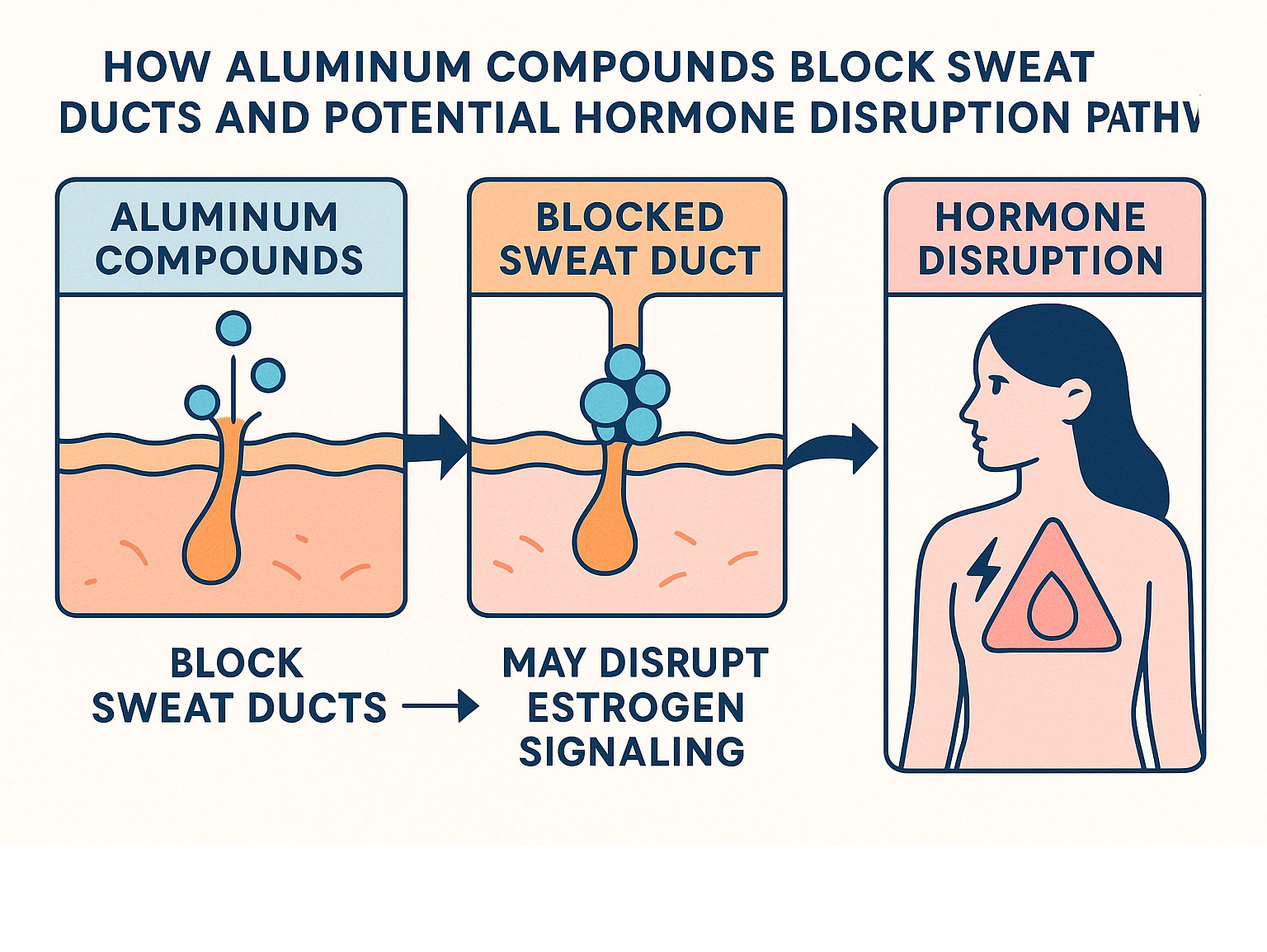
Let’s be honest – traditional deodorants and antiperspirants aren’t doing your body any favors. They keep you dry, but at what cost? The chemical cocktail in most conventional products raises some serious red flags that are hard to ignore.
Aluminum compounds are the main culprit here. These salts literally plug your sweat ducts, blocking your body’s natural cooling system completely. A 2018 study suggested that aluminum might interfere with how your body responds to estrogen, though researchers are still debating the full implications. The Scientific research on aluminum safety shows mixed results, but many health-conscious people prefer not to take chances.
Here’s what really happens under your arms: those aluminum plugs don’t just disappear. They mix with sweat proteins and create those stubborn yellow stains that ruin your favorite shirts. Meanwhile, your body gets confused and starts sweating more in other places to compensate for the blocked pores.
Parabens add another layer of concern. These preservatives keep products shelf-stable but may mess with your hormone balance over time. When you’re already dealing with daily hormone fluctuations, why add unnecessary disruption?
The environmental impact hits close to home too. Aluminum mining destroys ecosystems, while synthetic fragrances and petrochemicals stick around long after they wash down your drain. Most conventional deodorant packaging isn’t recyclable either, adding to the waste problem we’re all trying to solve.
What’s really frustrating is that your body becomes dependent on these chemical blocks. Once you stop using aluminum-based antiperspirants, you might actually sweat more initially because your pores need time to readjust. It’s like your body forgot how to regulate temperature naturally.
That’s exactly why natural deodorant alternatives are gaining so much momentum. People want products that work with their bodies instead of against them. If you’re curious about making the switch, exploring Non-Toxic Skincare options can be a game-changer for your overall wellness routine.
Best Natural Deodorant Alternatives in 2024
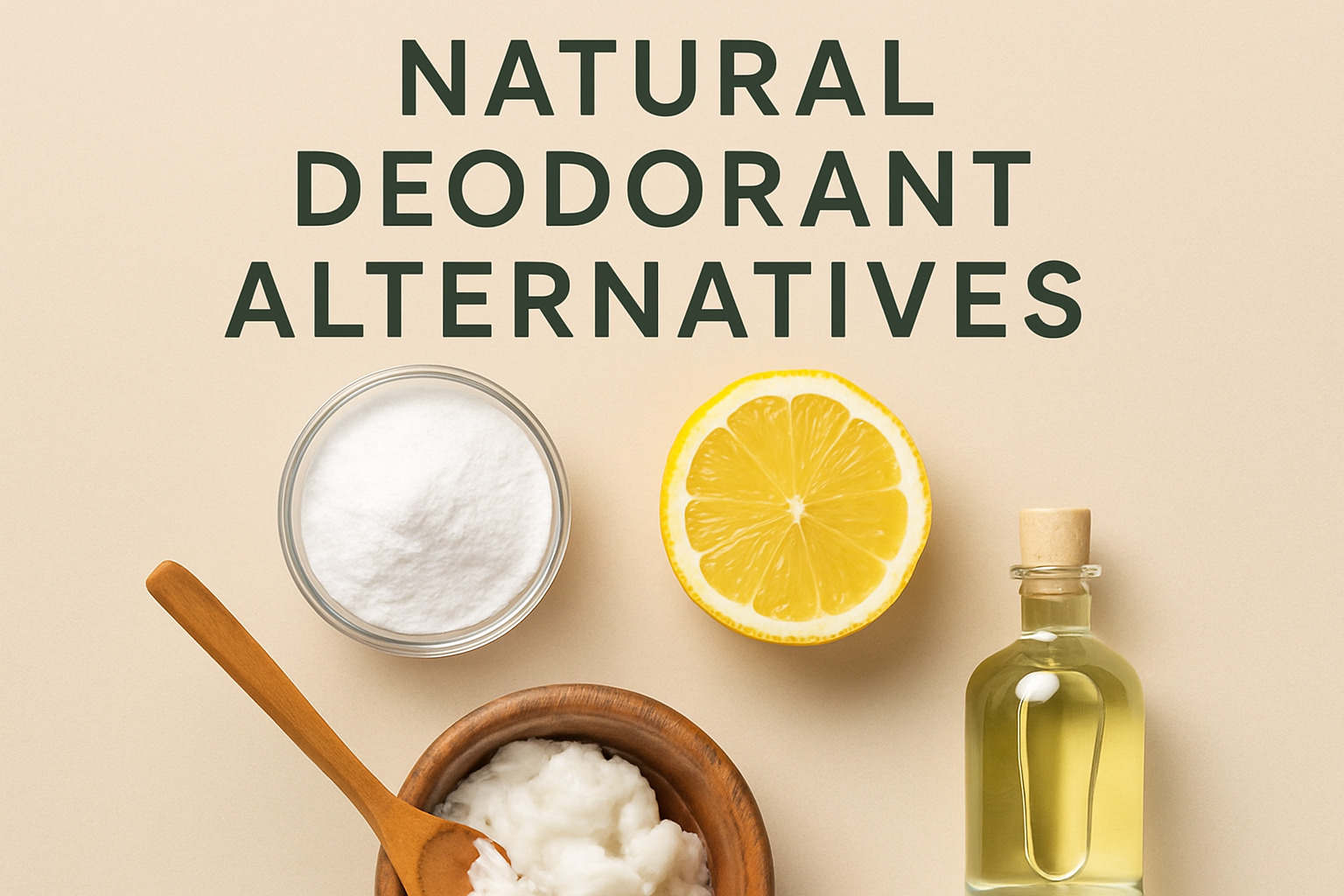
The world of natural deodorant alternatives has come a long way from the chalky, ineffective options of the past. Today’s formulas are sophisticated, powerful, and actually work – sometimes better than their chemical-laden counterparts.
What makes these modern alternatives so effective? They’ve figured out the secret: instead of trying to stop sweat completely (which isn’t healthy anyway), they focus on neutralizing the bacteria that cause odor in the first place. It’s like having a tiny army of good guys fighting the smelly bad guys under your arms.
The real game-changers use ingredients like magnesium hydroxide for gentle bacteria control, zinc oxide for its natural antimicrobial powers, and probiotics that actually improve your underarm microbiome. Many brands have also stepped up their packaging game with recyclable containers that won’t guilt-trip you every time you toss them.
The best part? You don’t need to reapply every hour like you might expect. Many of these natural formulas keep you fresh for 6-12 hours, with some mineral options lasting up to 24 hours.
Mineral & Salt-Based Heroes
Crystal deodorants are the quiet superstars of natural deodorant alternatives. These clear, unassuming sticks pack serious odor-fighting power that can last all day long. The magic happens when you wet the crystal and glide it over clean skin – it creates an invisible shield of mineral salts that bacteria simply can’t penetrate.
Potassium alum is the hero ingredient here, and it’s completely different from the aluminum in conventional antiperspirants. While regular aluminum gets absorbed into your skin, potassium alum molecules are too big to break through. They just sit on the surface, doing their protective work without any of the concerns.
Sea salt sprays offer another mineral approach that’s especially refreshing on hot days. These work by changing your skin’s pH level, making it impossible for odor-causing bacteria to thrive. Think of it as creating a hostile work environment for the smelly stuff. Plus, the natural antiseptic properties of sea salt keep things clean throughout the day.
Baking Soda–Free Sensitive Picks
If baking soda makes your underarms angry and red, you’re definitely not alone. The good news is that formulators have created gentle alternatives that won’t leave you looking like you got into a fight with a cheese grater.
Magnesium hydroxide is the sensitive skin hero you’ve been waiting for. It neutralizes the acids that bacteria produce when they feast on your sweat, but it does so without the harsh alkalinity that makes baking soda so irritating. Your underarms will thank you for the gentler approach.
Zinc oxide brings double benefits – it’s naturally antimicrobial and soothing to irritated skin. Combined with a coconut oil base, these formulas actually nourish your skin while keeping odors at bay. It’s like giving your underarms a spa treatment every morning.
Probiotic & AHA Innovators
Here’s where things get really interesting. The newest natural deodorant alternatives don’t just kill bacteria – they’re actually smart enough to support the good bacteria while eliminating the troublemakers.
Probiotic deodorants work with your body’s natural microbiome, introducing beneficial bacteria that crowd out the odor-causing strains. Some innovative formulas include hyaluronic acid to keep your underarm skin hydrated and happy, while others use glycolic acid to gently exfoliate and prevent bacterial buildup.
The real science-fiction stuff involves odor-neutralizing enzymes derived from fermented sugarcane. These molecular warriors break down smelly compounds at the source, offering a sophisticated approach that feels like something from a beauty lab of the future. It’s not just covering up odors – it’s eliminating them at the chemical level.
DIY Natural Deodorant Alternatives You Can Make Tonight
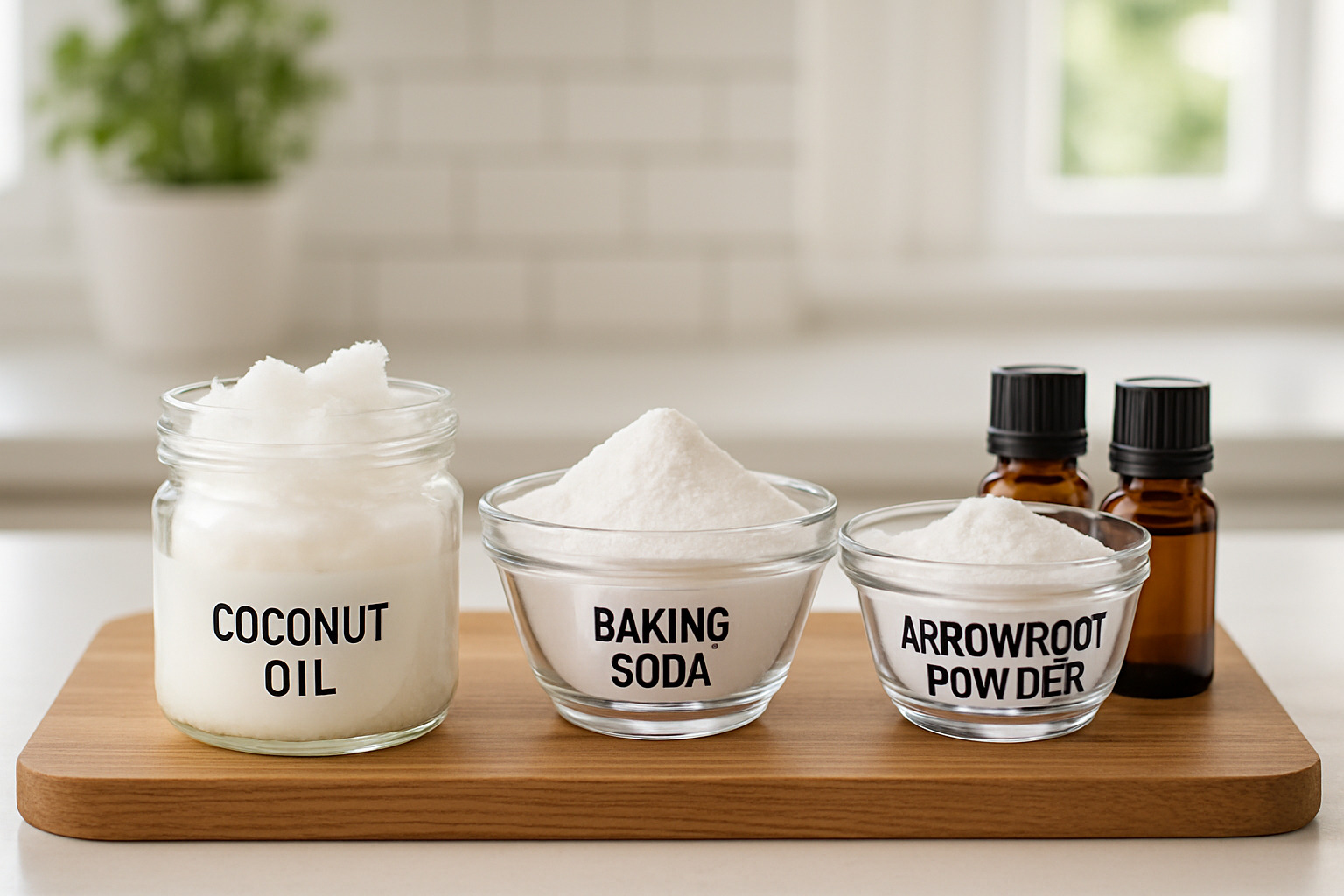
Ready to whip up your own natural deodorant alternatives with ingredients from your kitchen? Making homemade deodorant is surprisingly simple and gives you complete control over what touches your skin. Plus, a batch that keeps you fresh for months costs just a few dollars to make.
The best part about DIY deodorants is customization. You can adjust the formula based on your skin’s sensitivity, choose scents you actually love, and skip any ingredients that don’t play nice with your body. Many folks find their homemade creations work better than expensive store-bought options.
Your pantry probably already holds the key ingredients: coconut oil for its natural antibacterial properties, arrowroot powder or cornstarch for moisture absorption, and baking soda for odor neutralization. Add some essential oils like tea tree or lavender, and you’re golden.
For those ready to dive deeper into natural beauty DIY, our DIY Skincare Ingredients guide covers everything you need to know about creating safe, effective formulas at home.
Quick Two-Ingredient Powder
Sometimes the simplest solutions work best. Mix one part baking soda with six parts cornstarch, add 11-18 drops of your favorite essential oil, and store it in a shaker bottle. This gentle powder formula won’t stain your clothes and takes literally five minutes to make.
To use it, shake a pinch into your palm and dust your underarms lightly. The baking soda tackles odor-causing bacteria while cornstarch soaks up moisture throughout the day. If your skin gets cranky with baking soda, bump up the cornstarch ratio or swap in arrowroot powder for even gentler absorption.
Choose tea tree oil for extra bacteria-fighting power, or go with lemon and orange for an energizing morning boost. Lavender works beautifully if you prefer something calming and floral.
Always patch test any new formula on your inner wrist first. Wait 24 hours to make sure your skin is happy before applying to your underarms.
Nourishing Butter Bar
This luxurious cream deodorant feels like a spa treatment every time you use it. Melt three tablespoons each of shea butter and cocoa butter in a double boiler, then stir in three tablespoons baking soda and two tablespoons cornstarch. Add a few drops of vitamin E oil and 15-20 drops of essential oils, pour into containers, and pop in the fridge until set.
The rich, creamy texture glides on smoothly without leaving white marks on your favorite black shirt. Shea butter soothes irritated skin while cocoa butter provides natural antioxidants that keep your underarm skin healthy and happy.
Vitamin E oil acts as a natural preservative, helping your homemade creation last longer without going rancid. This formula is perfect if you have dry or sensitive underarm skin that needs extra TLC.
Detox Clay Paste
When you’re transitioning from conventional deodorants, this clay-based formula helps draw out impurities while providing excellent odor control. Start by melting 1/4 cup coconut oil with 1/4 cup candelilla wax in a double boiler. Stir in two tablespoons each of bentonite clay, kaolin clay, and arrowroot powder.
Add one tablespoon of apple cider vinegar and your chosen essential oils, then pour into containers to set. The bentonite clay brings minerals like iron, calcium, and zinc to the party while absorbing excess moisture. This powerhouse combination works especially well during those first few weeks when your body is adjusting to natural alternatives.
The apple cider vinegar helps balance your skin’s pH and adds extra antibacterial punch. This detox paste is gentler than straight baking soda formulas but still tough enough to handle serious odor control.
Transition & Troubleshooting: From Chemicals to Natural Deodorant Alternatives
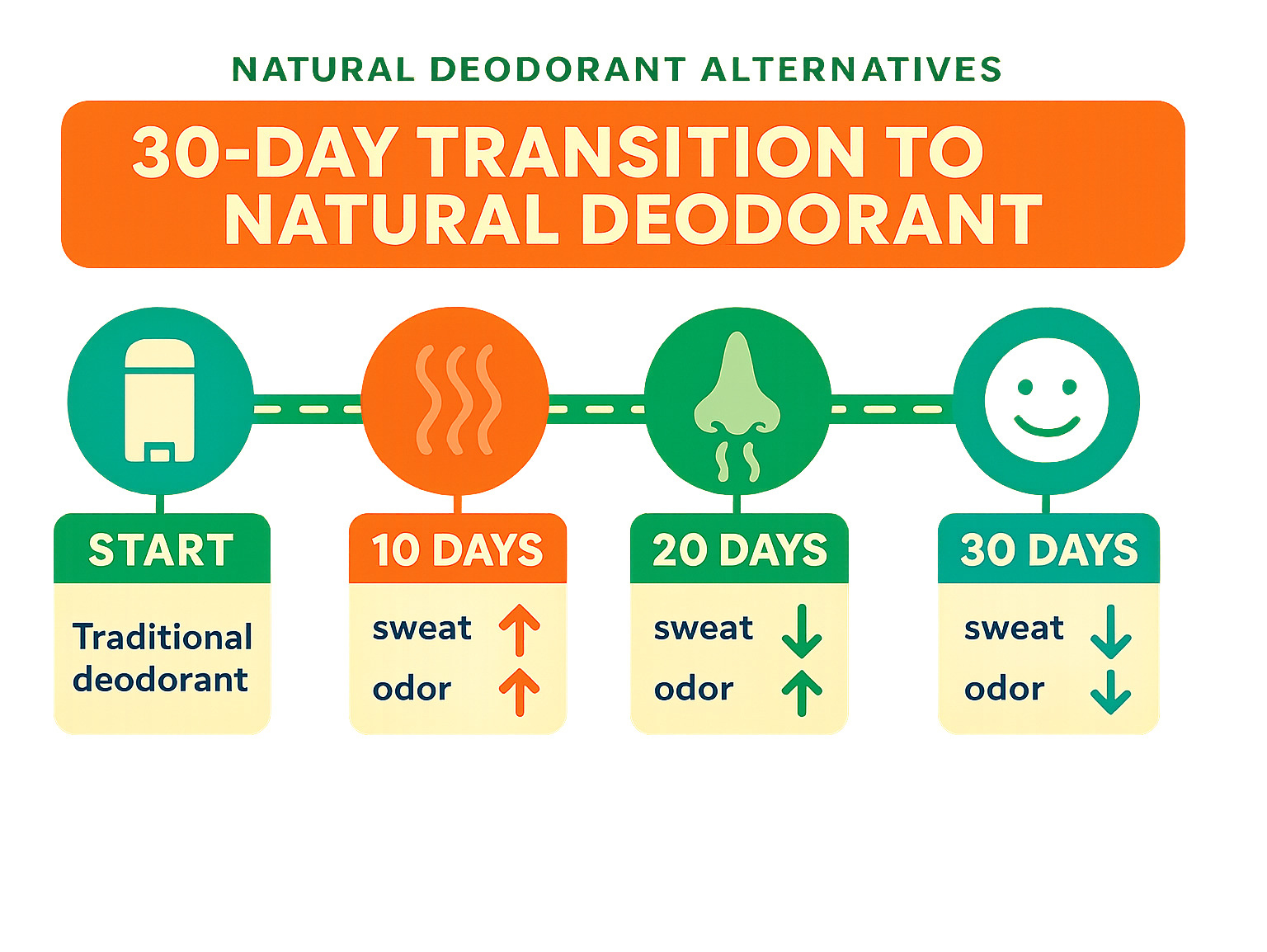
Let’s be honest – switching to natural deodorant alternatives isn’t always a walk in the park. Your body has gotten used to having its natural processes completely shut down by aluminum compounds, and it needs time to remember how to function normally again.
Think of it like taking off a tight pair of shoes after a long day. Your feet need a moment to adjust, and sometimes that adjustment period feels a bit uncomfortable. The same thing happens when you ditch conventional deodorants – your underarms need to relearn their natural rhythm.
Most people need about two to four weeks for their body to fully adapt to natural options. During this time, you might feel like you’re sweating more or notice different odors. This is completely normal and actually a sign that your body is detoxing and rebalancing itself.
The good news? Once you get through this transition period, many people find they actually sweat less and smell better than they did with conventional products. Your body’s natural odor-control mechanisms are surprisingly effective when they’re allowed to work properly.
For deeper insights into how different ingredients affect your skin during this transition, check out this Scientific research on skin pH to understand what’s happening beneath the surface.
Expect the First 30 Days
Week one is when things get interesting. Your sweat ducts start reopening after being plugged up for who knows how long. You might notice you’re sweating more than usual – don’t panic! This is your body’s way of clearing out the backlog and getting back to its natural detox process.
Some people experience what feels like an “odor spike” during this first week. Your underarm bacteria are essentially having a party because they suddenly have access to all the sweat they’ve been missing. It’s temporary, but it can catch you off guard if you’re not expecting it.
Week two brings the microbiome reset. The good bacteria that naturally help control odor start to flourish again, while the problematic bacteria begin to settle down. You might still need to reapply your chosen natural deodorant alternatives more often than you’d like, but things are definitely improving.
By week three, most people notice their sweat production starting to normalize. Your pores have adjusted to being open again, and your skin has gotten used to the new ingredients you’re using. The reapplication frequency usually decreases during this phase.
Week four is when the magic happens. Your body’s natural odor-control systems are back online and working efficiently. Many people find they can go longer between applications and feel more confident about their natural deodorant choice.
Throughout this entire process, drinking plenty of water helps your body flush out toxins through proper channels rather than through your skin. Some people also find that eating more leafy greens and cutting back on processed foods makes the transition smoother.
Managing Sensitivity & Allergies
Baking soda sensitivity is probably the most common issue people face with natural deodorants. If your underarms start looking like angry tomatoes or feel like they’re on fire, baking soda is likely the culprit. The high pH can be too harsh for sensitive skin, especially during the transition period when your skin is already adjusting to new routines.
The solution is simple – switch to a baking soda-free formula immediately. Magnesium hydroxide and zinc oxide offer similar odor-fighting power without the potential for irritation. Your skin will thank you, and you’ll still get excellent protection.
Essential oil reactions can also throw a wrench in your natural deodorant journey. Citrus oils are particularly tricky because they can cause burns when your skin is exposed to sunlight. If you notice redness, itching, or unusual sensitivity, the essential oils might be too strong for your skin.
Patch testing becomes your best friend during this transition. Test any new formula on a small patch of inner arm skin and wait 24 hours before applying it to your underarms. It’s much easier to deal with a tiny reaction on your arm than angry, irritated underarms.
For those with very sensitive skin, starting with ultra-simple formulas works best. Plain coconut oil or a basic cornstarch powder can provide gentle protection while your skin gets used to the idea of natural ingredients.
Maximizing Performance
Reapplication frequency is the biggest adjustment most people need to make. Unlike conventional antiperspirants that work for a day or more, most natural deodorant alternatives need refreshing every six to eight hours. This isn’t a failure of the product – it’s just how natural ingredients work.
Fabric choices make a bigger difference than you might expect. Breathable materials like cotton, bamboo, and linen allow air to circulate and don’t trap moisture against your skin. Synthetic fabrics can create a sweaty, bacteria-friendly environment that makes even the best natural deodorant struggle to keep up.
Your diet plays a surprising role in how effective your natural deodorant will be. Foods high in sulfur compounds (like garlic and onions), excessive caffeine, and heavily processed foods can all increase body odor. You don’t need to become a saint, but being mindful of these foods during your transition can help.
Staying hydrated helps your body eliminate toxins through proper channels rather than pushing them out through your skin. When you’re well-hydrated, your natural detox systems work more efficiently, making your deodorant’s job easier.
Consider embracing Zero Waste Skincare practices by making larger batches of DIY deodorants and storing them in reusable containers. This approach ensures you always have your preferred formula on hand while reducing packaging waste – a win-win for you and the environment.
Frequently Asked Questions about Natural Deodorant Alternatives
Do natural options stop sweat or just odor?
Here’s the honest truth: natural deodorant alternatives are designed to tackle odor, not stop sweating entirely. Unlike conventional antiperspirants that use aluminum to plug your sweat ducts, natural formulas work with your body’s natural processes instead of against them.
This might sound like a downside, but it’s actually a huge win for your health. Sweating is how your body regulates temperature and flushes out toxins – blocking this process can lead to clogged pores, skin irritation, and even compensatory sweating in other areas.
Natural deodorants use clever ingredients like arrowroot powder and cornstarch to absorb moisture, while essential oils and mineral salts neutralize the bacteria that cause odor. You’ll still sweat (which is perfectly normal!), but you won’t smell.
Most people find that after the initial adjustment period, they actually sweat less than they did with conventional products. Your body stops overcompensating for blocked pores and settles into a healthier, more balanced rhythm.
How often should I reapply during workouts?
The reapplication game varies depending on your activity level and which type of natural deodorant alternatives you choose. For regular daily activities, most natural formulas keep you fresh for about 6-8 hours.
When it comes to intense workouts, you’ll likely need a mid-session touch-up. Crystal deodorants are the marathon champions here – they often power through hour-long gym sessions without needing backup. Cream and stick formulas might need refreshing after 30-45 minutes of serious sweating.
The smart move? Apply your natural deodorant before heading to the gym and toss a travel-size version in your workout bag. Powder formulas are particularly gym-friendly since they’re quick to apply and don’t require much rubbing in.
Listen to your body and don’t stress about needing more frequent applications than you did with conventional products. It’s a small trade-off for avoiding aluminum and other questionable chemicals.
Who should avoid certain ingredients (e.g., lemon, baking soda)?
Not all natural ingredients play nice with every skin type, and knowing your potential triggers can save you from some uncomfortable trial and error.
Baking soda is the biggest troublemaker in the natural deodorant world. Its high pH can cause redness, burning, and even chemical-burn-like rashes on sensitive skin. If you’ve experienced underarm irritation with natural deodorants before, baking soda was probably the culprit. Stick to magnesium hydroxide or zinc oxide formulas instead.
Citrus essential oils like lemon and lime require extra caution because they’re phototoxic. This means they can cause serious burns when your skin is exposed to sunlight. Never apply citrus-based deodorants to freshly shaved underarms or before spending time outdoors. If you love citrus scents, save them for evening applications only.
Pregnant women should chat with their healthcare providers about essential oil use, as some oils aren’t recommended during pregnancy. People with autoimmune conditions or those taking certain medications should also get the green light from their doctor before trying new topical ingredients.
The golden rule? Always patch test new formulas on a small area of skin first. Your inner wrist or behind your ear are good testing spots that won’t leave you dealing with underarm irritation if something doesn’t agree with you.
Conclusion
Making the switch to natural deodorant alternatives is one of those beautiful changes that benefits both you and the planet. You’ve finded that effective odor protection doesn’t require harsh chemicals or aluminum compounds – nature provides plenty of powerful solutions that actually work with your body instead of against it.
The clean beauty journey isn’t always smooth sailing, especially during those first few weeks of transition. But once you find your perfect match – whether it’s a long-lasting mineral crystal, a gentle magnesium formula, or your own homemade coconut oil blend – you’ll wonder why you waited so long to make the change.
Beyond the obvious health benefits, there’s something deeply satisfying about knowing exactly what you’re putting on your body every day. No more mysterious chemical names or concerns about hormone disruption. Plus, you’ll save money in the long run, especially if you dive into DIY recipes that cost pennies to make.
Your underarms will thank you too. No more yellow-stained shirts, no more clogged pores, and no more fighting against your body’s natural processes. Many people find they actually feel fresher throughout the day once their skin can breathe properly again.
The environmental impact makes the switch even more worthwhile. From reduced packaging waste to biodegradable ingredients, choosing natural deodorant alternatives is a simple way to lighten your footprint while taking better care of yourself.
At Beyond Beauty Lab, we love seeing people find that natural doesn’t mean compromising on effectiveness – it often means getting better results while feeling good about your choices.
Ready to explore more ways to clean up your beauty routine? Our guide to Clean Beauty Products offers even more natural swaps that can transform your daily self-care ritual into something truly nourishing.

